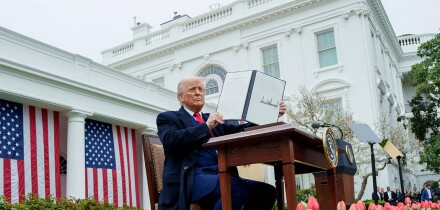This is the first in a two part series that demonstrates how the short-term view of day traders can contribute to the formation of a market bubble. This week's article focuses on risk and return in neoclassical finance and next week's looks at risk and return in intrinsic time.
I begin with two hypotheses. The first is a simple invariance principle: assets with the same perceived risk must have the same expected return. The second is a conjecture that short-term speculators live in "trading time" or intrinsic time rather than calendar time, because they focus on the return earned per rapid round-trip trade rather than return per month or per year.
Neoclassical finance demands an expected return proportional to volatility. We show that speculators living in intrinsic time, while otherwise behaving rationally, will expect a return that is proportional to a stock's "temperature," where temperature is defined as the stock's traditional volatility multiplied by the square root of the stock's trading frequency. The faster a stock trades, the "hotter" it will look, and the higher the return speculators will expect to earn.
If intrinsic-time speculators start to drive up a stock price and so tempt traditional calendar-time investors to enter the market, the subsequent increase in the trading frequency of the stock further raises the stock's temperature, which then increases the speculators' expected return. This feedback can lead to market bubbles and stock prices that grow uncontrollably hotter and higher over time.
Risk and Return in Neoclassical Finance
We begin by rederiving the time-honored neoclassical relations between risk and return.
Suppose the market consists of N different stocks of price Si, and a risk-free bond B that provides a riskless return r, and that each stock i's return and risk i is defined by the doublet (µi, *i), where µi is the instantaneous expected return per unit of calendar time and *i is the instantaneous return volatility and *i,j is the correlation matrix of returns.
How do you relate the risk and return of different stocks? I propose the following principle:
Two portfolios with the same perceived irreducible risk should have the same expected return.
Irreducible risk means risk that cannot be eliminated by hedging or diversification.
Consider two stocks S and P with doublets (µS, *S ) and (µP, *P ) respectively, with *P> *S. How should we compare the risk and return of S and P? By combining riskless B with risky P, we can create a weighted mixture V
with the same volatility as S. According to the principle above, V and S must have the same expected return, i.e. if, *V = *S then µV = µS . These two conditions on V imply that
and therefore, for any stock or portfolio i,
Here * is the well-known Sharpe ratio whose value is unknown. If all stocks are on average uncorrelated with each other, then a large stock portfolio has asymptotically zero risk and therefore zero expected return, which implies that * = 0 and all stocks are expected to earn the riskless rate.
More realistically, all stocks are usually correlated with the overall market index M with a correlation *iM . You can then hedge away any stock Si's market risk by shorting i shares of M to create a "market-neutral stock" Si of value
where
A little algebra shows that the risk-return doublet ( µi, *i )
for Si is
Given two market-correlated stocks S and P, their market-neutral versions S and P are described by equation 2.6. How should we compare them?
Since S and P are uncorrelated their returns and volatilities must satisfy equation 2.2 and so
The ability to diversify again implies that the Sharpe ratio * ~ 0, so that µi = r. Substituting for µi from equation 2.6 leads to the standard Capital Asset Pricing Model result:
This derivation provides a convenient way to extend these results of rational expectations into the realm of behavioral finance.
This week's Learning Curve was written by Emanuel Derman, who recently retired from Goldman Sachs where he was a managing director and head of the quantitative risk strategies group in the firm-wide risk department in New York. He can be contacted at emanuel@ederman.com .






